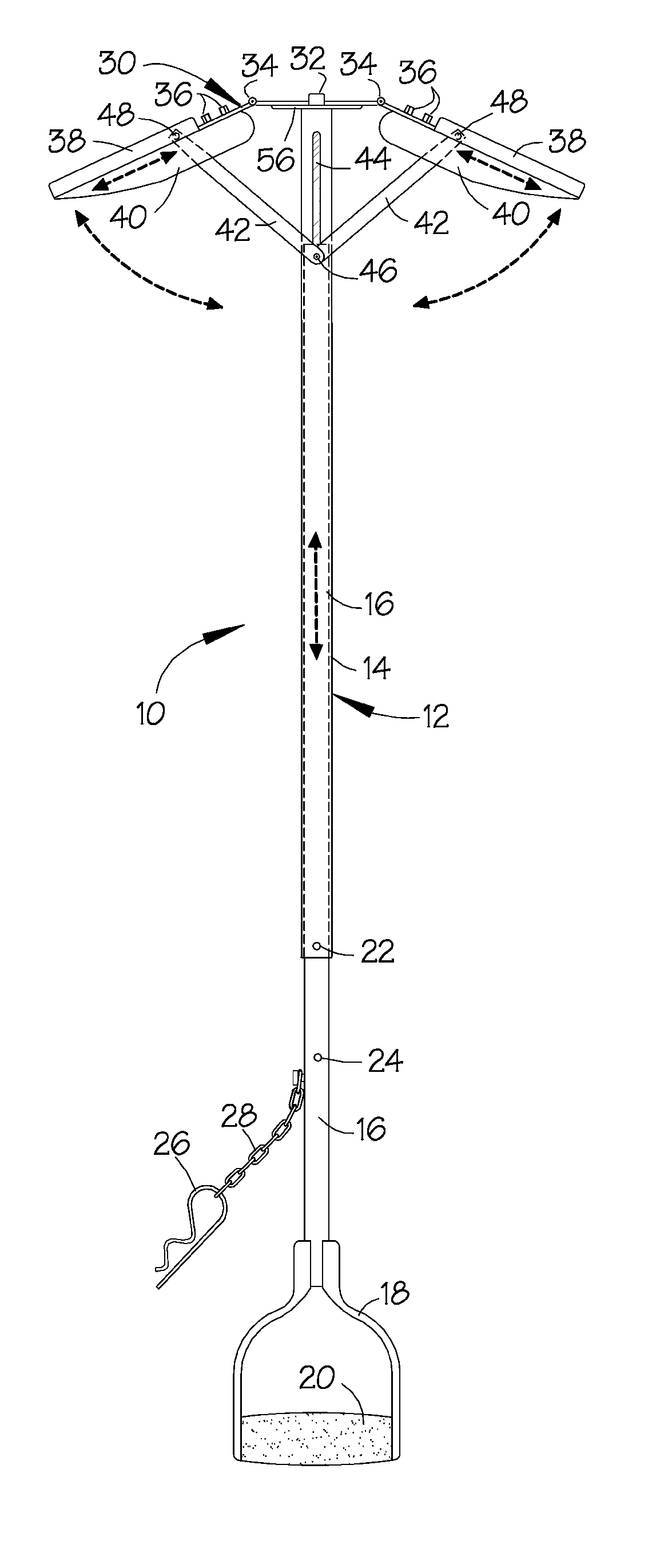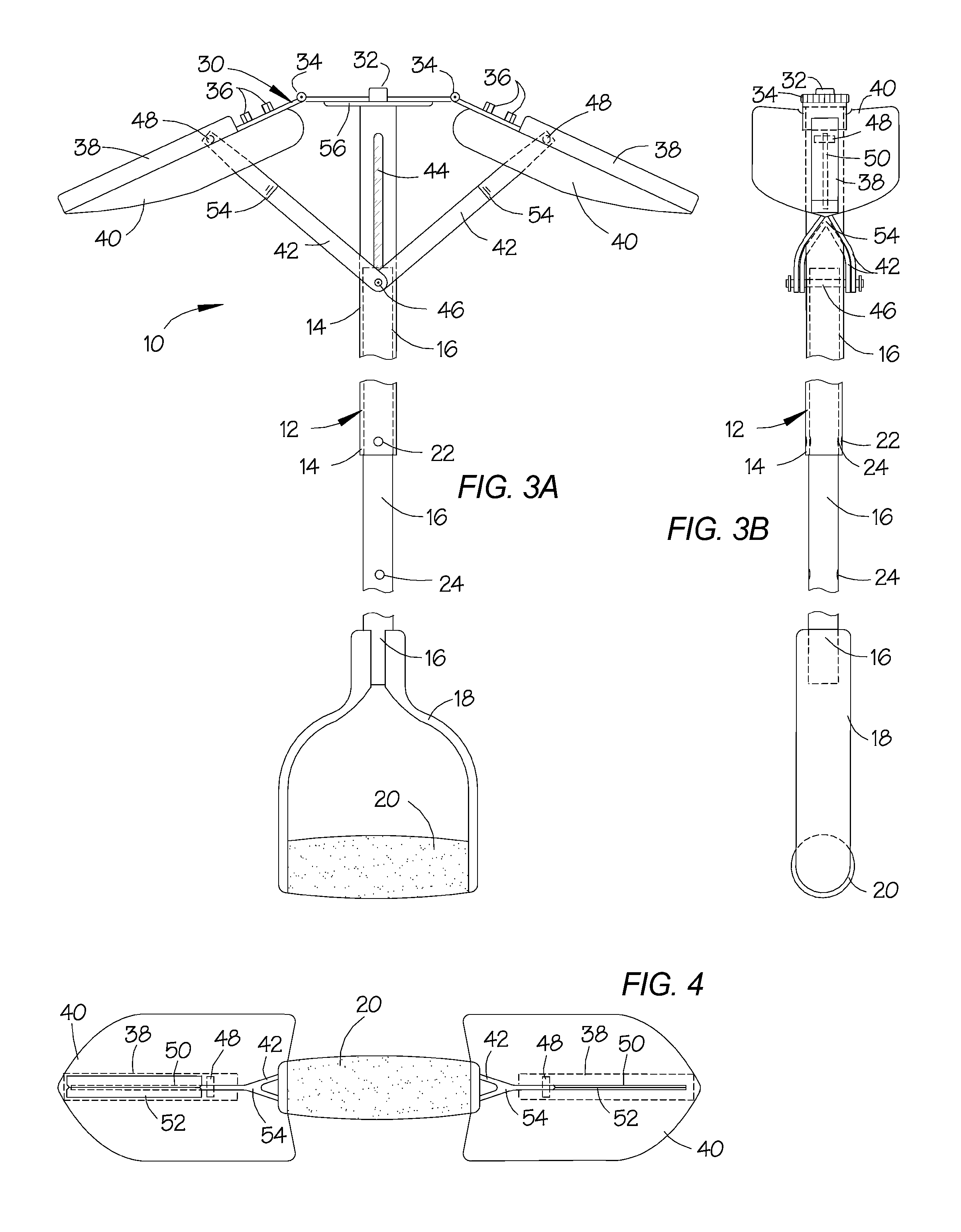Even a
storm that delivers only 6″ of snow, if combined with blowing and drifting, can make roads impassable for many passenger vehicles.
Driving on such unplowed roads can cause a vehicle to begin to plow snow with the undercarriage of the vehicle if the snow is deeper than the vehicles ground clearance.
Plowing snow causes the snow to compact, and when the snow which the vehicle is plowing with its undercarriage becomes compact and dense enough, the vehicle's under
carriage will begin to ride up on the compacted snow, unweighting the tires and causing a loss of traction, thereby causing the vehicle to become hung-up and stuck in the compacted snow.
This is especially true when there is considerable blowing and drifting of snow taking place, because snow drifts are already partially compacted by the wind.
Plowing roads, thereby moving all of the snow to the sides of the road creating snow banks can create its own set of problems because plowing compacts snow, increasing its density and cohesiveness, thereby creating snowbanks that are much harder and more compacted than freshly fallen snow.
On the occasion that roads become icy and slippery during the winter, vehicles may lose control and drive off the road becoming hung-up and stuck in these snowbanks.
There is also the matter that plows naturally throw up a snowbank across every
driveway that they pass on the street or roadway, oftentimes plowing them in and plugging them up.
Waiting for such driveways to be plowed or blown out is not always an available option and the choice is then to shovel the
driveway open or try and drive through the snowbank.
Attempting to drive through a snowbank often leads to a vehicle becoming hungup and stuck in the snowbank.
As the plow comes along early in the
morning passing the parked vehicles, snow pushed by the plow forms a snow
bank around the parked vehicles, as well as being thrown underneath the vehicles due to the high initial velocity of the snow coming off of the plows blade.
The driving out choice often leads to a vehicle becoming hung-up and stuck in a snowbank.
Having a vehicle towed out of a snow
bank is the most costly option and a tow
truck may not be available.
When the force provided by the driving wheels exceeds the drag on the vehicle, the vehicle will become unstuck.
The first reason is that when a vehicle has become hungup, whether by driving through very deep snow, such as a compacted snow drift or a plowed in
driveway, or by sliding off of the road into a compacted snowbank, it is not possible, from one side of the vehicle, to push the compacted snow underneath the vehicle out the other side.
However, using the same snow shovel to try and remove the compacted snow from beneath the vehicle is very difficult to do because conventional shovels are designed to push, lift and throw snow, and they do not work well for trying to draw compacted snow out from underneath a hung-up vehicle.
Many conventional snow shovels are not designed to penetrate compacted snow even when it is not found under a vehicle, and may be difficult if not impossible to use to remove compacted snow from underneath a vehicle hungup and stuck in the snow.
None of the prior art is designed for penetration of compacted snow under a vehicle.
None of the prior art is designed for the efficient removal of compacted snow from under a vehicle.
This
snow removal apparatus is designed to remove snow from an elevated surface and is not designed to penetrate compacted snow or for use under a vehicle.
This shovel is not designed to pull compacted snow out from under a vehicle.
The flattened shovel blade is not conducive to carrying any sizeable amount of snow out from under a vehicle and the design itself is bulky and inefficient.
This tool is not designed to pull compacted snow out from under a vehicle.
This snow rake is not designed to penetrate compacted snow and it is not designed for use under a vehicle.
This snow rake is not designed to penetrate compacted snow and it is not designed for use under a vehicle.
These shovels are not designed to deal with compacted snow underneath a vehicle.
A snow-shovel's scoop is generally too big to fit under most vehicles and with lightweight plastic construction, most are not strong enough to penetrate compacted snow.
Snow has an extremely low
coefficient of friction, even more so when it is colder outside and icy, and most often will slide off of the snow shovel blade as it is being withdrawn from underneath the vehicle, especially since there is a tendency for the snow to be scraped off of the shovel blade by the lower edge of the car frame if the shovel is lifted at all before it is entirely clear of the underside of the vehicle.
Smaller square point and especially round point shovels are very good at penetrating compacted snow under a vehicle but they are poor at pulling very much snow out since they are designed for lifting loads and not dragging them.
Snow tends to constantly slide off the blade of such shovels as it is pulled from under the vehicle leaving most of any small shovel full still under the vehicle.
 Login to View More
Login to View More  Login to View More
Login to View More 


